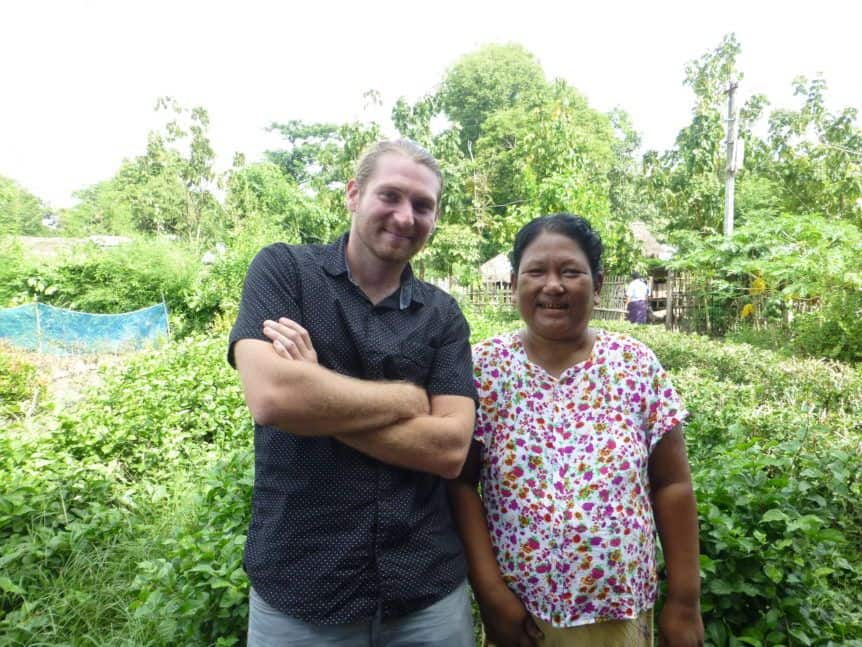Each month, we will take you behind the scenes to introduce you to the teams that are dedicated to empowering the world’s poorest people to become entrepreneurs. You will meet Field Officers, volunteers, and Whole Planet Foundation staff. Through their stories you will get a glimpse into a day on the job—whether it is in Austin, Texas or Huehuetenango, Guatemala.
This month, meet Daniel Zoltani, Global Programs Director at Whole Planet Foundation.
What is your education, life experience, and professional background that led you to the job?
I had the fortunate opportunity to study abroad, and was introduced to the concept of microcredit in an economic development course. I completed a semester in Valparaiso, Chile and a semester in Buenos Aires, Argentina. At this point I was struck by the bug and there was no turning back. Upon graduating from the University of Colorado with degrees in Economics and International Affairs, I wanted to continue to explore the world; in part because of a growing wandering spirit but also a drive to live life through experience. I figured a bike ride through Central America would be a great place to start.
Through this journey, I connected with hardworking farmers, diverse rural commerce and talented artisans working to make ends meet. I picked up Muhammad Yunus’ book “Banker to The Poor” and serendipitously crossed paths with an organization that was helping these women start and grow their businesses. It was called Grameen Guatemala, the microfinance organization started by Grameen Trust and Whole Planet Foundation two years earlier. Quickly my plan for a 3-month bike trip through Central America turned into a 3-year long assignment supporting the expansion of Grameen from Guatemala to Mexico to Colombia. From Latin America, I was recruited by Whole Planet Foundation and would spend the next five years living and working in Asia managing our growing Asia/Pacific portfolio before assuming the role of Global Programs Director in December 2015.
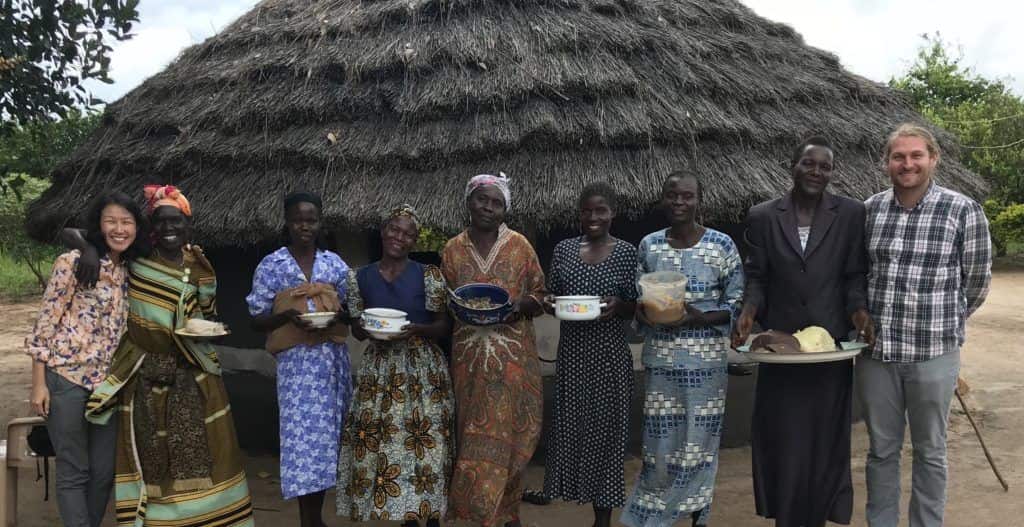
Daniel and Zoe, Regional Director for East/South Africa, in Uganda visiting partner Village Enterprise and collecting local recipes for the WPF cookbook.
What’s your favorite part of the job?
Collectively, our small field team based around the world has enormous access to a diverse group of microfinance organizations implementing a diverse set of financial inclusion models. I enjoy and appreciate the unique access we are granted. Whether this is speaking with the organization’s board of directors to better understand overall strategy or the organizations management to discuss business and outreach plans, or the field staff to review different methodologies in serving the poorest or speaking with the clients to discuss what they see as their challenges and opportunities. The job is an ongoing learning experience!
What’s the most interesting thing you have learned on the job in the last month?
In the last month I visited existing and potential new partners in Cambodia, Nepal and India with Claire Kelly our Asia/Pacific Regional Director. In addition to visiting traditional microfinance organizations, we also visited four non-traditional microfinance social enterprises. In India and Nepal the organizations were providing financing for home solar kits and last mile distribution of consumer products like diapers, sanitary pads, and life enhancing kitchen appliances. In Cambodia, one organization was providing financing for water filters, while the other was providing agriculture inputs on credit. Often the social enterprise model can provide additional value added to the clients beyond financing, such as access to high quality productive assets and access to markets.
We took the strategy of comparing the social enterprise products and services with our existing MFI partner in Cambodia, Chamroeun. In our analysis – we found the agriculture financing services offered through the social enterprise were superior to the agriculture financing products offered at Chamroeun. While Chamroeun does provide modified agriculture repayment schedules with grace periods, they do not provide access to inputs, agriculture training or market buybacks. On the other hand, Chamroeun was offering water filters at a competitive price and with 12-month financing bundled with a business loan. So regarding the water filters, the Chamroeun approach was more aligned with our traditional model and client centric in terms of product choice and accessibility. Based on this comparison, we are now taking additional steps to further explore a potential partnership with the agriculture financing organization.
Tell a story of the microcredit client or MFI partner colleague who has inspired you the most.
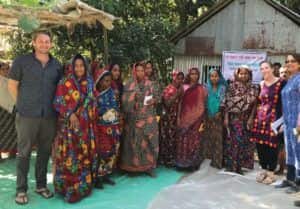
WPF’s Daniel Zoltani and Claire Kelly visiting microcredit clients in Bangladesh.
I would like to share about Moslima, a client of BRAC Bangladesh’s UltraPoor/Graduation program. Moslima chose a milk cow for her enterprise activity. In the UltraPoor program, rather than a loan, an initial asset is granted as part of the one-time intervention for the very poorest. Moslima expects the cow will produce 2-3 liters a day, so she can keep one liter and sell the remainder for approximately 40 taka/liter ($0.50).
She has no plans to sell the cow, but wants to take care of it and raise a couple of calves which she can eventually sell. Until the cow starts to produce milk, Moslima sells the cow dung to neighbors for fuel. This is her first income generating activity. Her modest home, a mud hut with a tin roof, has two rooms. One for her and her family and the other for her new cow that she proudly named White Babou – roughly translated as “elegance.”
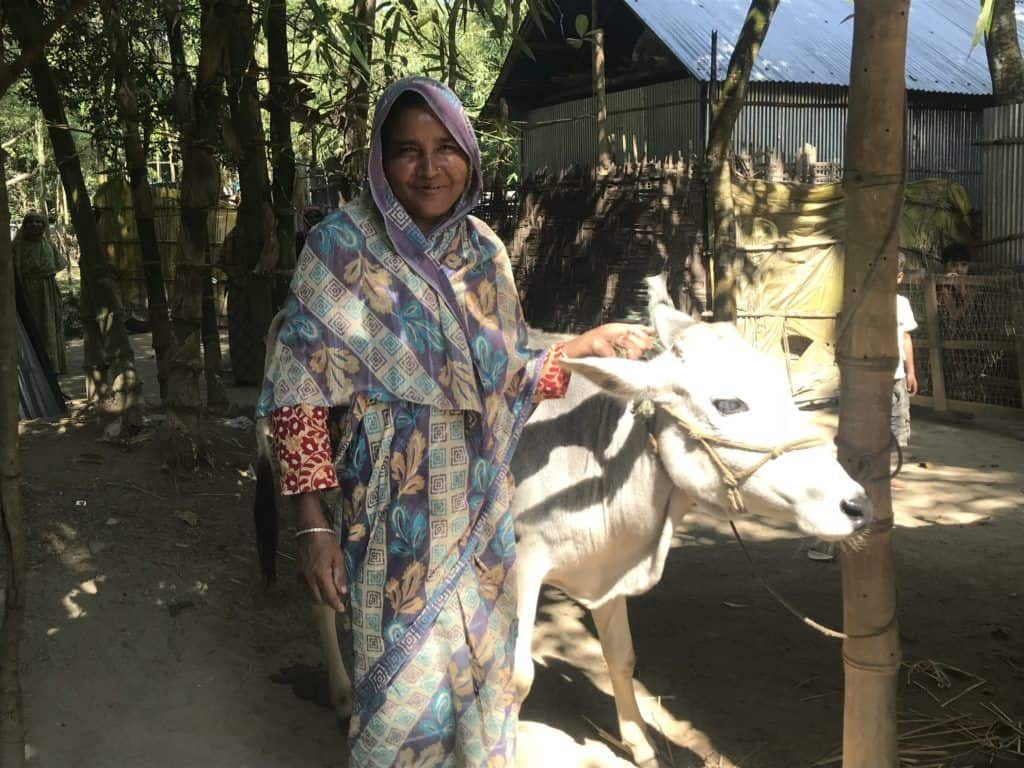
Moslima will use the profits from her cow, which she’s named White Babou, to continue her path out of poverty.
At WPF we believe entrepreneurs are everywhere—but they are not defined by occupation, gender, age, or income. What makes them an entrepreneur is their perseverance and tenacious spirit to improve their lives and the lives of their family.
What do you like to do when you’re not working?
While I spend a LOT of my time traveling internationally for work, I am a homebody when in Austin. I find peace in home projects, and gardening and have recently discovered a passion for masonry, beekeeping and sailing.
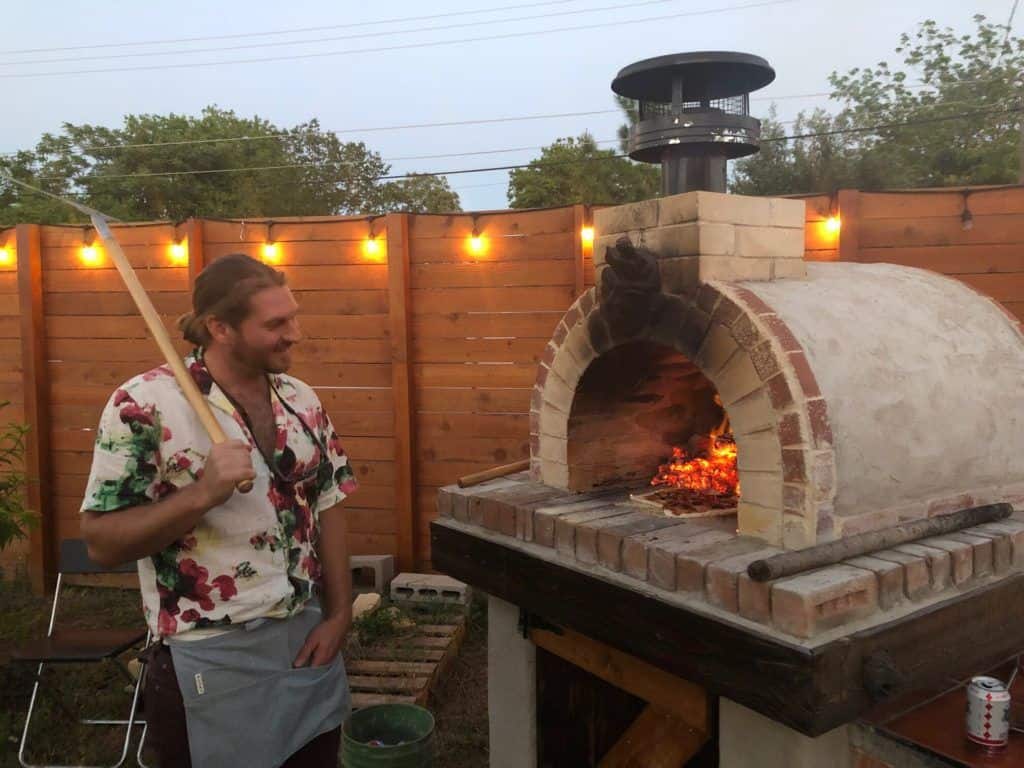
Daniel admires a pizza baking in the wood-fired oven he built in his backyard in Austin, Texas.

